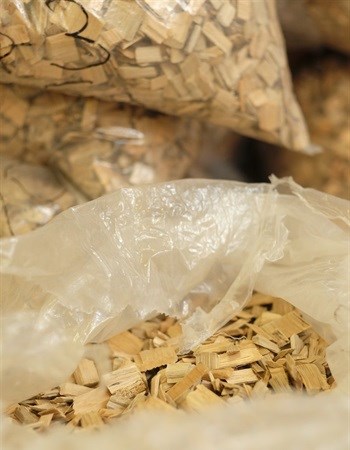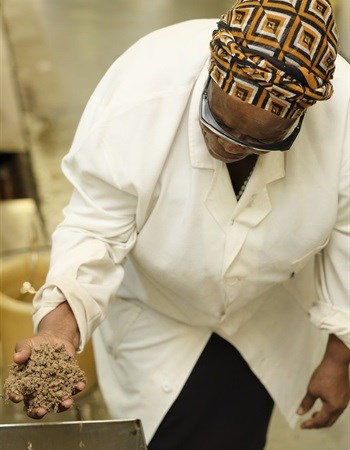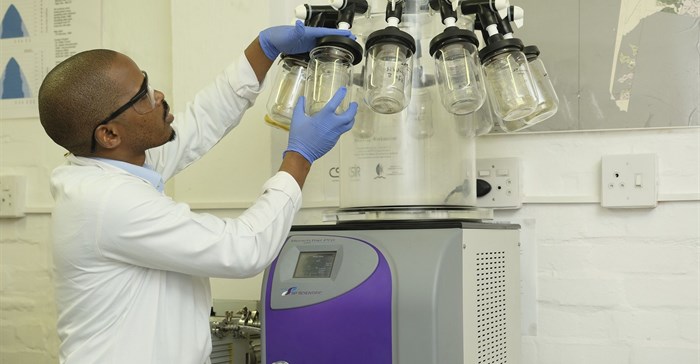In a first for South Africa, the government has launched a R37.5m biorefinery facility in Durban. The facility is set to extract maximum value from biomass waste and will support innovation in a range of industries, including forestry, agro-processing and other biomass-based industries.
Initial focus on forestry
The Minister of Science and Technology, Mmamoloko Kubayi-Ngubane, launched the Biorefinery Industry Development Facility (BIDF) at the Council for Scientific and Industrial Research (CSIR) campus in Durban on 20 March 2018. The initial focus of the BIDF is the forestry sector, which is under financial strain globally. Technology innovations have been earmarked to help prevent job losses and enable growth in this sector.
Biorefinery in South Africa’s pulp and paper industry is practised on a very limited scale. Wood, pulp and paper waste ends up in landfill sites or is burnt, stockpiled or even pumped out to sea. The potential to extract value from it is not realised, which means lost opportunities for the country’s economy.
Additionally, the country is running out of landfill space. High-value speciality chemicals can be extracted from sawmill and dust shavings, while mill sludge can be converted into nanocrystalline cellulose, biopolymers and biogas.
Adressing low levels of investment in innovation, research and development
The facility is the third Industry Innovation Partnership Fund (IIPF) initiative to be launched by the Department of Science and Technology (DST) and its entity, the CSIR. The other two are the Biomanufacturing Industry Development Centre and the Nanomaterials Industrial Development Facility. The purpose of the IIPF is to support research and development programmes that enhance industry competitiveness.
Speaking at the launch, Minister Kubayi-Ngubane said a ministerial review report highlighted several challenges that impeded the growth and strengthening of the country’s national system of innovation, one of which was low levels of investments in research and development by the private sector.
“A key recommendation of the report was for the government to put in place effective measures and mechanisms to attract the private sector to invest in R&D and innovation,” said the minister.
The minister further stated that the Industry Innovation Partnership (IIP) was a response to those recommendations whose key objectives were to leverage industry investment in RDI by stimulating increased co-funding and participation by industry players in projects to maintain and increase their export market share and mitigate under-spending in technology and innovation in identified niche or strategic sectors in the South African economy. “A key long-term outcomes measure would be increased sector contribution to the GDP through stronger RDI-based industrial development,” said the minister, adding that the IIP should support initiatives, such as satellite development and manufacturing and titanium powder development, among others.
Use science and technology to make SA more competitive
Talking about the need for science to support industrial development, CSIR CEO, Dr Thulani Dlamini said making South Africa more competitive was at the heart of the CSIR.
“Our mandate requires us to use science and technology to contribute to scientific and industrial development, which will improve the competitiveness of the South African industry and also create new industries. The CSIR is using innovation to contribute to economic growth and thus assisting in the fight against poverty, inequality and unemployment,” said Dlamini.
Prof Bruce Sithole, the CSIR manager for forestry products, emphasised the potential of the BIDF to be of service to other sectors, for example, exploring the use of chicken feathers in high-value products. Small quantities of waste chicken feathers are processed into feed for livestock, but the majority of the waste is traditionally disposed of by burning or landfilling. However, the BIDF is demonstrating that keratin can be successfully extracted from the poultry by-product to be used in high-value applications, such as nanostructured materials for biomedical applications.

All images supplied
Making a meaningful contribution to the sector and economy
“The BIDF is accessible to large industry and small, medium and micro-sized enterprises (SMMEs) for their research and development, analytical and pilot scale testing, evaluation, processing and development of technologies for processing biomass. Some of the equipment at the BIDF is unique in South Africa. The facility is home to highly-skilled chemists, engineers and biologists who are well-versed in technologies for beneficiation and valorisation of biomass,” said Sithole.
Significant investments are being made to develop the human capital required to support the sector. The CSIR has partnered with the University of KwaZulu-Natal to develop the required skills and expertise that will enable and promote biorefinery technologies in South Africa.
Jane Molony, executive director of the Pulp and Paper Manufacturing Association of South Africa, expressed confidence in the potential of the facility to make a meaningful contribution to the sector and the South African economy.





































